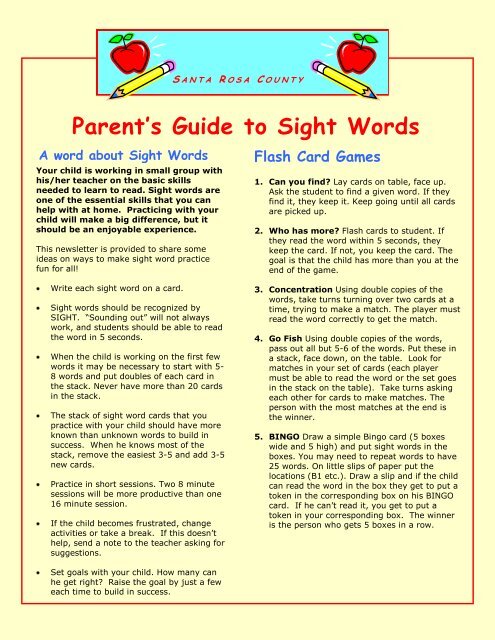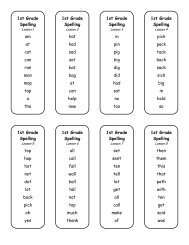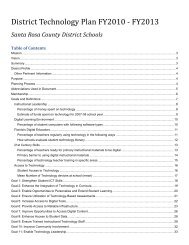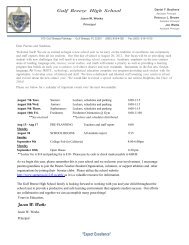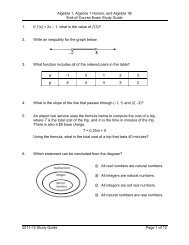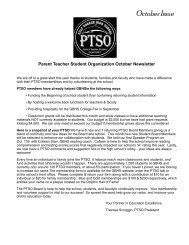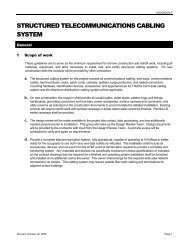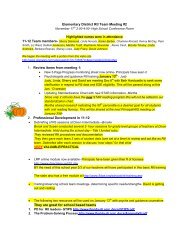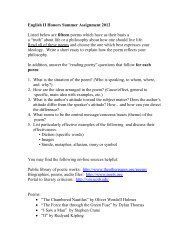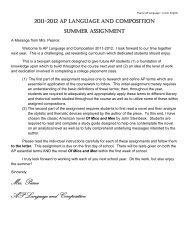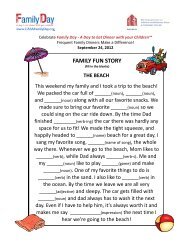Parent's Guide to Sight Words
Parent's Guide to Sight Words
Parent's Guide to Sight Words
You also want an ePaper? Increase the reach of your titles
YUMPU automatically turns print PDFs into web optimized ePapers that Google loves.
S A N T A R O S A C O U N T Y<br />
Parent’s <strong>Guide</strong> <strong>to</strong> <strong>Sight</strong> <strong>Words</strong><br />
A word about <strong>Sight</strong> <strong>Words</strong><br />
Your child is working in small group with<br />
his/her teacher on the basic skills<br />
needed <strong>to</strong> learn <strong>to</strong> read. <strong>Sight</strong> words are<br />
one of the essential skills that you can<br />
help with at home. Practicing with your<br />
child will make a big difference, but it<br />
should be an enjoyable experience.<br />
This newsletter is provided <strong>to</strong> share some<br />
ideas on ways <strong>to</strong> make sight word practice<br />
fun for all!<br />
Write each sight word on a card.<br />
<strong>Sight</strong> words should be recognized by<br />
SIGHT. “Sounding out” will not always<br />
work, and students should be able <strong>to</strong> read<br />
the word in 5 seconds.<br />
When the child is working on the first few<br />
words it may be necessary <strong>to</strong> start with 5-<br />
8 words and put doubles of each card in<br />
the stack. Never have more than 20 cards<br />
in the stack.<br />
The stack of sight word cards that you<br />
practice with your child should have more<br />
known than unknown words <strong>to</strong> build in<br />
success. When he knows most of the<br />
stack, remove the easiest 3-5 and add 3-5<br />
new cards.<br />
Practice in short sessions. Two 8 minute<br />
sessions will be more productive than one<br />
16 minute session.<br />
If the child becomes frustrated, change<br />
activities or take a break. If this doesn’t<br />
help, send a note <strong>to</strong> the teacher asking for<br />
suggestions.<br />
Flash Card Games<br />
1. Can you find? Lay cards on table, face up.<br />
Ask the student <strong>to</strong> find a given word. If they<br />
find it, they keep it. Keep going until all cards<br />
are picked up.<br />
2. Who has more? Flash cards <strong>to</strong> student. If<br />
they read the word within 5 seconds, they<br />
keep the card. If not, you keep the card. The<br />
goal is that the child has more than you at the<br />
end of the game.<br />
3. Concentration Using double copies of the<br />
words, take turns turning over two cards at a<br />
time, trying <strong>to</strong> make a match. The player must<br />
read the word correctly <strong>to</strong> get the match.<br />
4. Go Fish Using double copies of the words,<br />
pass out all but 5-6 of the words. Put these in<br />
a stack, face down, on the table. Look for<br />
matches in your set of cards (each player<br />
must be able <strong>to</strong> read the word or the set goes<br />
in the stack on the table). Take turns asking<br />
each other for cards <strong>to</strong> make matches. The<br />
person with the most matches at the end is<br />
the winner.<br />
5. BINGO Draw a simple Bingo card (5 boxes<br />
wide and 5 high) and put sight words in the<br />
boxes. You may need <strong>to</strong> repeat words <strong>to</strong> have<br />
25 words. On little slips of paper put the<br />
locations (B1 etc.). Draw a slip and if the child<br />
can read the word in the box they get <strong>to</strong> put a<br />
<strong>to</strong>ken in the corresponding box on his BINGO<br />
card. If he can’t read it, you get <strong>to</strong> put a<br />
<strong>to</strong>ken in your corresponding box. The winner<br />
is the person who gets 5 boxes in a row.<br />
Set goals with your child. How many can<br />
he get right? Raise the goal by just a few<br />
each time <strong>to</strong> build in success.
A Parent’s <strong>Guide</strong> <strong>to</strong> <strong>Sight</strong> <strong>Words</strong> Page 2<br />
Technology<br />
If you have access <strong>to</strong> an iPad or<br />
iPhone, there are sight word apps<br />
available.<br />
On a computer do a search for sight<br />
word games. Many are available.<br />
Make a word search with your<br />
child’s words. (Do a search for free<br />
word search maker.)<br />
Other activities<br />
1. Using a highlighter or crayon help the<br />
child find his sight words in print<br />
(newspaper, magazine etc.)<br />
2. Read <strong>to</strong> your child, pointing <strong>to</strong> the<br />
words so that he sees the words in<br />
books.<br />
3. Let your child read a book at his level.<br />
You supply the words that he doesn’t<br />
know. He will be excited <strong>to</strong> see his<br />
words in the books.<br />
4. Put magnetic letters on the<br />
refrigera<strong>to</strong>r or on a metal cookie<br />
sheet. Let him make his words.<br />
Thank You Parents!<br />
Thank you for all you do <strong>to</strong><br />
help us make this year a<br />
successful one for your<br />
child. If we can help you in<br />
any way, please contact us!<br />
The Reading-Writing Connection<br />
Research shows that Reading and Writing<br />
are connected and that writing helps the<br />
child read and reading helps the child<br />
write.<br />
Find fun ways for your child <strong>to</strong> write his sight<br />
words. Ideas:<br />
Put shaving cream on a table and let him<br />
write the words with his finger.<br />
Write words with a stick in the sand<br />
outside.<br />
Encourage your child <strong>to</strong> WRITE. Help them<br />
write the sounds they hear for words they<br />
don’t know, but help them make the<br />
connection between their sight words and<br />
writing by encouraging them <strong>to</strong> spell the<br />
sight words correctly. Provide as much<br />
support as needed. At first you may need<br />
<strong>to</strong> lay the cards out for the child <strong>to</strong> see,<br />
and later you may be able <strong>to</strong> just have<br />
them there in case the child can’t figure it<br />
out on their own.


